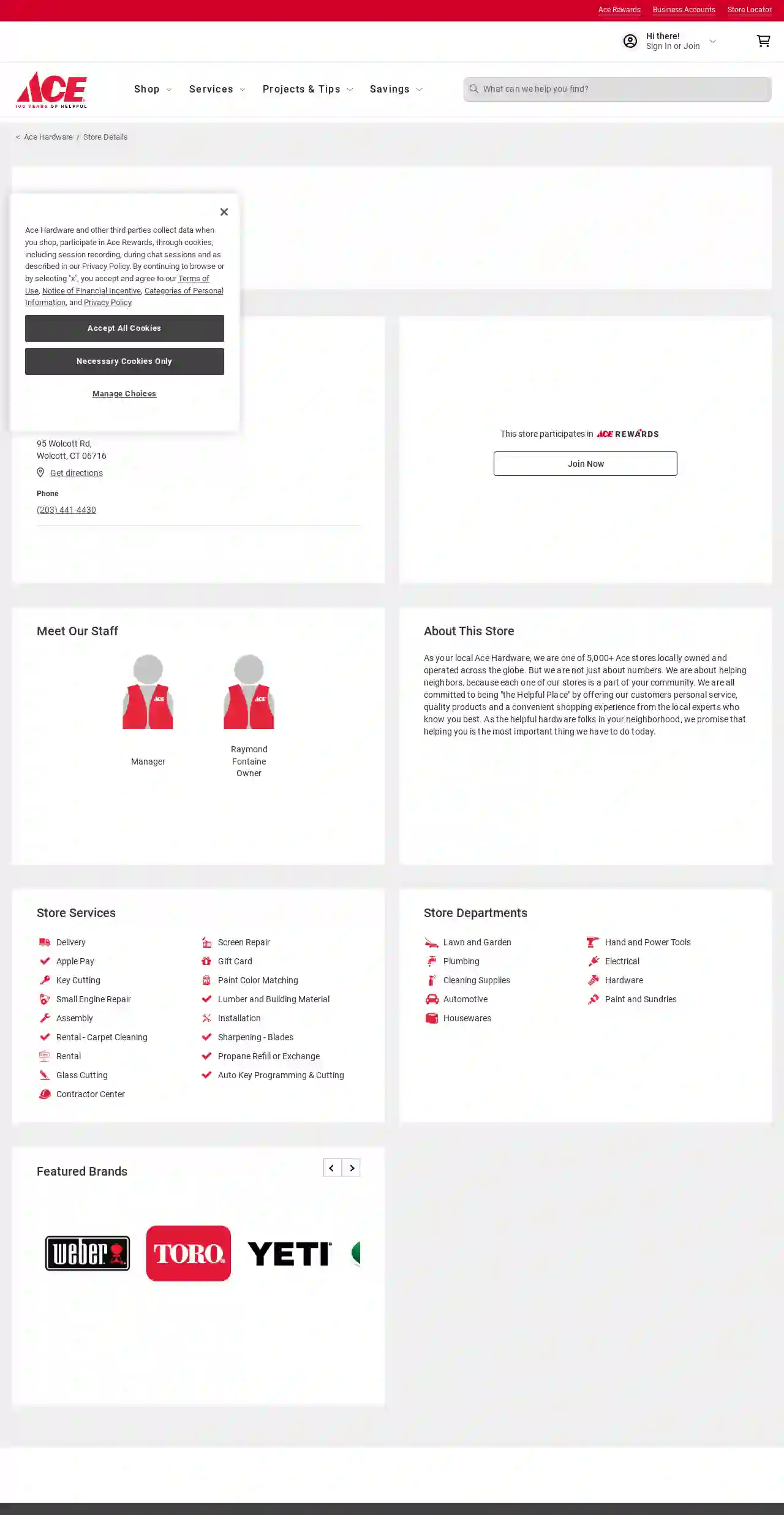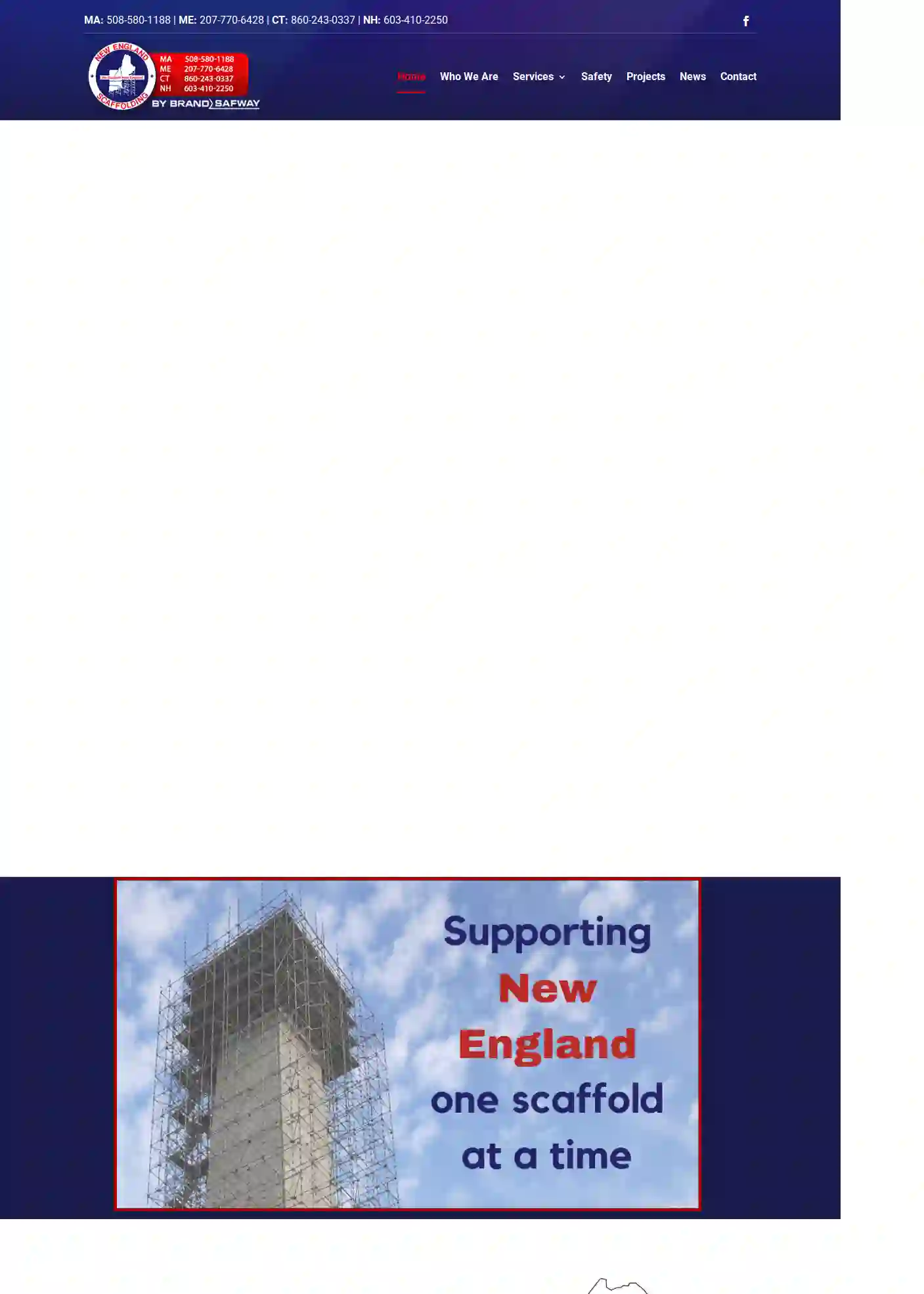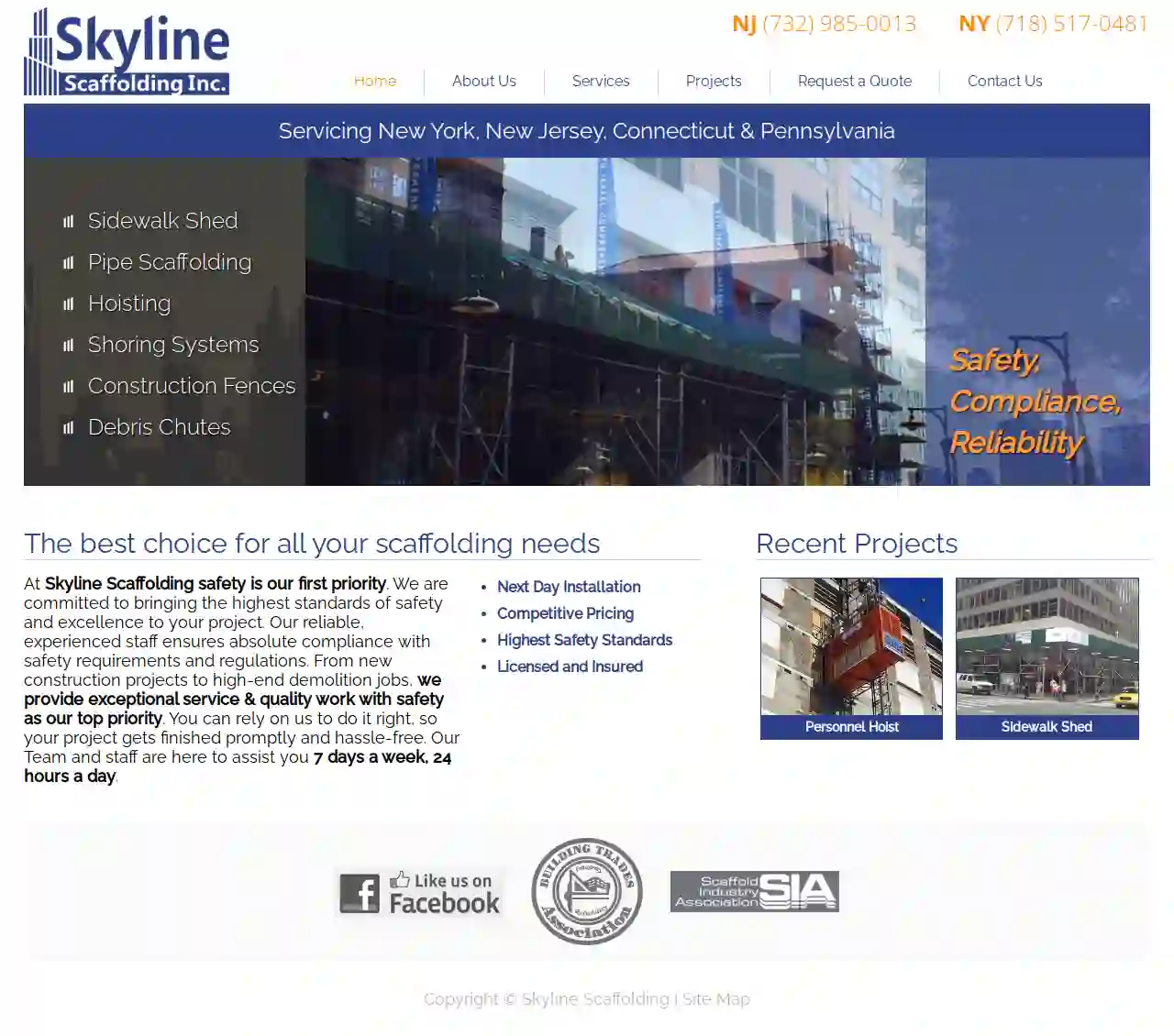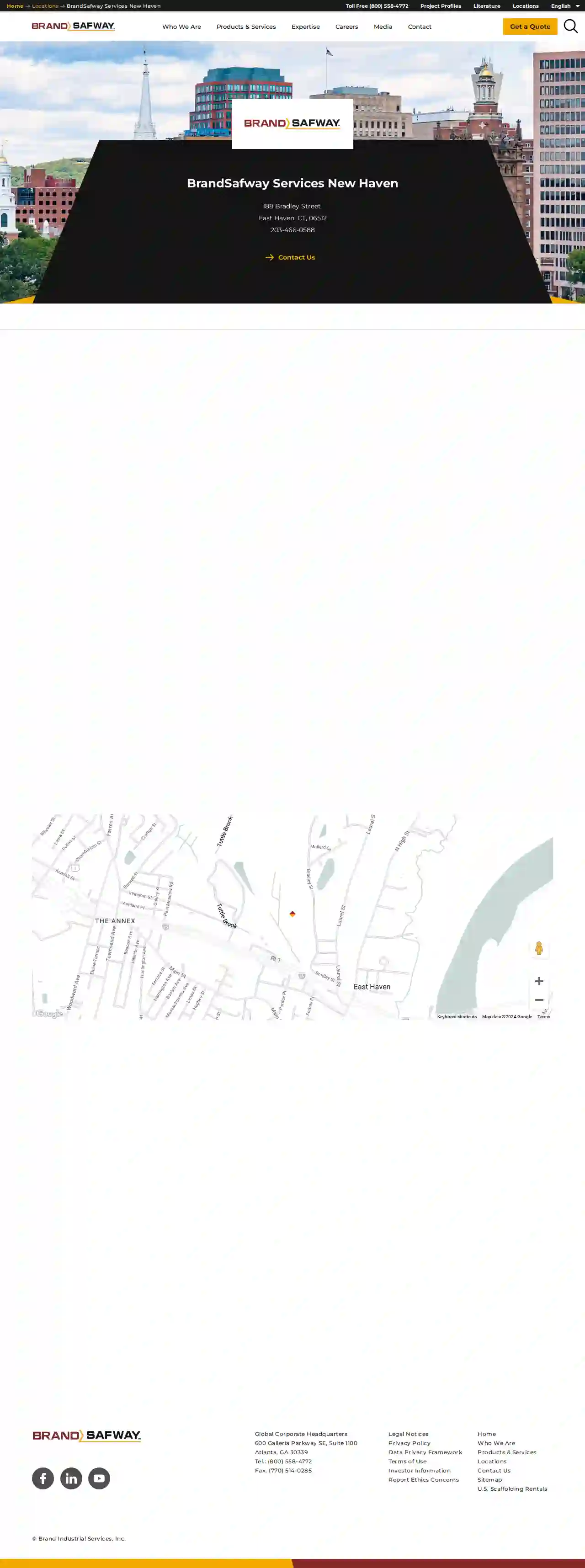Scaffolding Rental Shelton
Find Temporary Scaffolding in Shelton
Receive multiple Scaffolding Rental Services quotes for your project today! Compare profiles, reviews, accreditations, portfolio, etc... and choose the best deal.

Nutmeg Scaffold & Ladder Co
4.97 reviewsWilton, CT, 743 Danbury Road, 06897, USNutmeg Scaffold is a leading provider of scaffolding rental and sales services in Connecticut, serving Fairfield County for over 50 years. With a wide range of commercial-quality products, they aim to provide the contractor community with top-of-the-line scaffolding solutions. Their staff can help calculate the required scaffolding for any project and deliver it to the job site, ensuring maximum efficiency and safety. Nutmeg Scaffold offers various services including scaffolding rental, pump jack sales and rental, and scaffolding in use. They prioritize safety and environmental consciousness, recommending the use of scaffolding stair towers for upper-level entry and promoting eco-friendly practices.
- Services
- Why Us?
- Accreditations
- Our Team
- Testimonials
- Gallery
Get Quote
Ace Hardware of Wolcott
4.567 reviews95 Wolcott Rd, Wolcott, 06716, USAs your local Ace Hardware, we are one of 5,000+ Ace stores locally owned and operated across the globe. But we are not just about numbers. We are about helping neighbors, because each one of our stores is a part of your community. We are all committed to being "the Helpful Place" by offering our customers personal service, quality products and a convenient shopping experience from the local experts who know you best. As the helpful hardware folks in your neighborhood, we promise that helping you is the most important thing we have to do today.
- Services
- Why Us?
- Accreditations
- Our Team
- Gallery
Get Quote
New England Scaffolding
2.54 reviewsNorwell, MA, 412 R Washington St, 02061, USNew England Scaffolding is a leading provider of scaffolding solutions, offering a range of services including scaffolding, shoring, suspended scaffolding, containment, temporary fencing, and debris chutes. With offices in Massachusetts, Maine, Connecticut, and New Hampshire, they prioritize safety and customer satisfaction. Their team of experienced professionals ensures that projects are completed efficiently and effectively, adhering to the highest safety standards. New England Scaffolding is dedicated to delivering top-quality services and building long-lasting relationships with clients.
- Services
- Why Us?
- Accreditations
- Our Team
- Testimonials
- Gallery
Get Quote
SafwayAtlantic by BrandSafway – New Jersey
4.423 reviews123 Main St, Newark, 07001, USSafway Atlantic by BrandSafway New Jersey is a leading provider of scaffolding solutions, offering a wide range of services including scaffolding rental, scaffolding installation, and scaffolding safety training. With a strong commitment to safety and customer satisfaction, the team at Safway Atlantic by BrandSafway New Jersey strives to provide top-notch service and support to clients across various industries.
- Services
- Why Us?
- Accreditations
- Our Team
- Testimonials
Get Quote
R&R Scaffolding, Ltd.
4.69 reviews56 Leonard Street, New York, 10013, USR&R Companies have been pioneers and innovators in the suspended scaffold industry for nearly four decades. We deliver services and products ranging from the simplest solutions to the most complex systems. Our primary markets include commercial, industrial, institutional, and residential sectors. Our diverse portfolio of brands and extensive capabilities have transformed us into the multifaceted company we are today.
- Services
- Why Us?
- Accreditations
- Gallery
Get Quote
Scaffold Partners
Waterbury, USScaffold Partners specializes in connecting investors to well-vetted self-storage investment opportunities that deliver consistent financial returns. The self-storage industry is a $44 billion industry that has experienced exponential growth in recent years, averaging annual returns of 17.26%. Unlike other asset classes, the self-storage industry is highly fragmented, with the public REITs owning less than 40% of the market. This leaves the majority of properties in the hands of smaller operators, creating tremendous acquisition potential when compared to other real estate asset classes. Fundamentals in this sector are strong, and the self-storage market promises long term expansion and success. New opportunities – for example storing large recreational items and technology – are forecast to carry forward consumer demand and bring in new demographics in coming years.
- Services
- Why Us?
- Accreditations
- Gallery
Get Quote
Skyline Scaffolding Group, Inc.
4.49 reviews740 Ramsey Avenue, Hillside, 07205, USAt Skyline Scaffolding, safety is our top priority. We are committed to bringing the highest standards of safety and excellence to your project. Our reliable, experienced staff ensures absolute compliance with safety requirements and regulations. From new construction projects to high-end demolition jobs, we provide exceptional service & quality work with safety as our top priority. We have over 25 years of experience in the field of scaffolding and bring that experience to your project. We are passionate about what we do and look for ways to provide the best possible service to our clients. For our customer’s convenience, we provide all of our services to New York, New Jersey, Pennsylvania, and Connecticut.
- Services
- Why Us?
- Accreditations
- Our Team
- Gallery
Get Quote
Unique Scaffolding Systems, LLC
4.37 reviews808 Fairfield Avenue, Kenilworth, 07033, USAt Unique Scaffolding Systems, we have the highest standards in the industry with reliability, consistent high quality workmanship, competitive prices, and high regard for safety. We are fully insured, fully trained and OSHA compliant. We consistently exceed customer expectations. We specialize in all aspects of scaffolding including systems scaffold, heavy duty side walk bridges, stair towers and shoring. We also offer hoists, netting, enclosures, and more. We are a NJ-based, owner-operated, scaffold erecting and dismantling contractor doing business in the tri-state area since 2008. We will provide an access solution to any project, including commercial buildings, schools, churches, municipal projects, water tank towers and refineries. We also specialize in scaffolding for the restoration of landmark-designated historic buildings and structures. We are available 24 hours a day, 7 days a week. Engineered drawings are available for any project, no matter how simple or complex.
- Services
- Why Us?
- Gallery
Get Quote
BrandSafway Services New Haven
4.73 reviews123 BrandSafway Blvd, New Haven, 12345, USBrandSafway is a leading provider of access solutions, including scaffolding, aerial work platforms, and forming and shoring. With a strong commitment to safety, quality, and customer satisfaction, BrandSafway offers a wide range of services tailored to meet the unique needs of clients across various industries. Their team of experienced professionals works closely with clients to understand their requirements and deliver customized solutions that enhance efficiency and productivity. BrandSafway is dedicated to providing innovative solutions that meet the highest standards of safety and quality, ensuring successful project outcomes and long-term partnerships.
- Services
- Why Us?
- Accreditations
- Our Team
- Testimonials
Get Quote
Warning Lights Inc
4.84 reviewsHamden, USAt Equipment Rental CT, we offer a wide range of equipment rentals for various industries, including landscaping, construction, and masonry. Our extensive inventory includes air compressors, boom lifts, concrete mixers, and more. With our equipment, you can expedite your project and get the job done efficiently. We deliver our equipment to your site, so you can focus on your project. Contact us today to learn more about our equipment rentals and how we can help you.
- Services
- Why Us?
- Gallery
Get Quote
Over 2,353+ Scaffolding Contractors on our platform
Our scaffolding contractors operate in Shelton & beyond!
ScaffoldingHQ has curated and vetted the Best Scaffolding Businesses in Shelton. Find a reliable business today.
Frequently Asked Questions About Scaffolding Rental
- Tube and Clamp: Capacity depends on the configuration and the strength of the components.
- System Scaffolding: Typically has higher load capacities due to its pre-engineered design.
- Mobile Towers: Have specific weight limits based on their size and model.
- Has a single working platform, typically about 60-70cm wide.
- Suitable for tasks where limited space is available.
- Has a wider working platform, usually about 1.3-1.4 meters wide.
- Provides more working space and stability, allowing for movement of materials and multiple workers.
- Save Time: Easily compare quotes from multiple reputable scaffolding rental companies in one place.
- Find Local Providers: Quickly locate scaffolding companies serving your area.
- Get Competitive Rates: Access a network of rental providers, allowing you to compare prices and find the best deal.
- Ensure Safety and Quality: We partner with companies that prioritize safety and adhere to industry standards.
- Access Expert Support: Our customer support team is here to assist you throughout the rental process.
- Stop Using It Immediately: Do not attempt to use damaged scaffolding. It could be unsafe.
- Contact the Rental Company: Notify the scaffolding rental company about the damage as soon as possible.
- Document the Damage: Take photos or videos of the damage for documentation. The rental agreement should outline the procedures for handling damaged equipment. You may be responsible for repair or replacement costs, depending on the circumstances and the terms of the agreement.
What are the weight limits for different types of scaffolding?
What is the difference between single and double scaffolding?
Single Scaffolding:
What are the benefits of using a scaffolding directory like ScaffoldingHQ?
What happens if the scaffolding is damaged during my rental period?
What are the weight limits for different types of scaffolding?
- Tube and Clamp: Capacity depends on the configuration and the strength of the components.
- System Scaffolding: Typically has higher load capacities due to its pre-engineered design.
- Mobile Towers: Have specific weight limits based on their size and model.
What is the difference between single and double scaffolding?
Single Scaffolding:
- Has a single working platform, typically about 60-70cm wide.
- Suitable for tasks where limited space is available.
- Has a wider working platform, usually about 1.3-1.4 meters wide.
- Provides more working space and stability, allowing for movement of materials and multiple workers.
What are the benefits of using a scaffolding directory like ScaffoldingHQ?
- Save Time: Easily compare quotes from multiple reputable scaffolding rental companies in one place.
- Find Local Providers: Quickly locate scaffolding companies serving your area.
- Get Competitive Rates: Access a network of rental providers, allowing you to compare prices and find the best deal.
- Ensure Safety and Quality: We partner with companies that prioritize safety and adhere to industry standards.
- Access Expert Support: Our customer support team is here to assist you throughout the rental process.
What happens if the scaffolding is damaged during my rental period?
- Stop Using It Immediately: Do not attempt to use damaged scaffolding. It could be unsafe.
- Contact the Rental Company: Notify the scaffolding rental company about the damage as soon as possible.
- Document the Damage: Take photos or videos of the damage for documentation. The rental agreement should outline the procedures for handling damaged equipment. You may be responsible for repair or replacement costs, depending on the circumstances and the terms of the agreement.